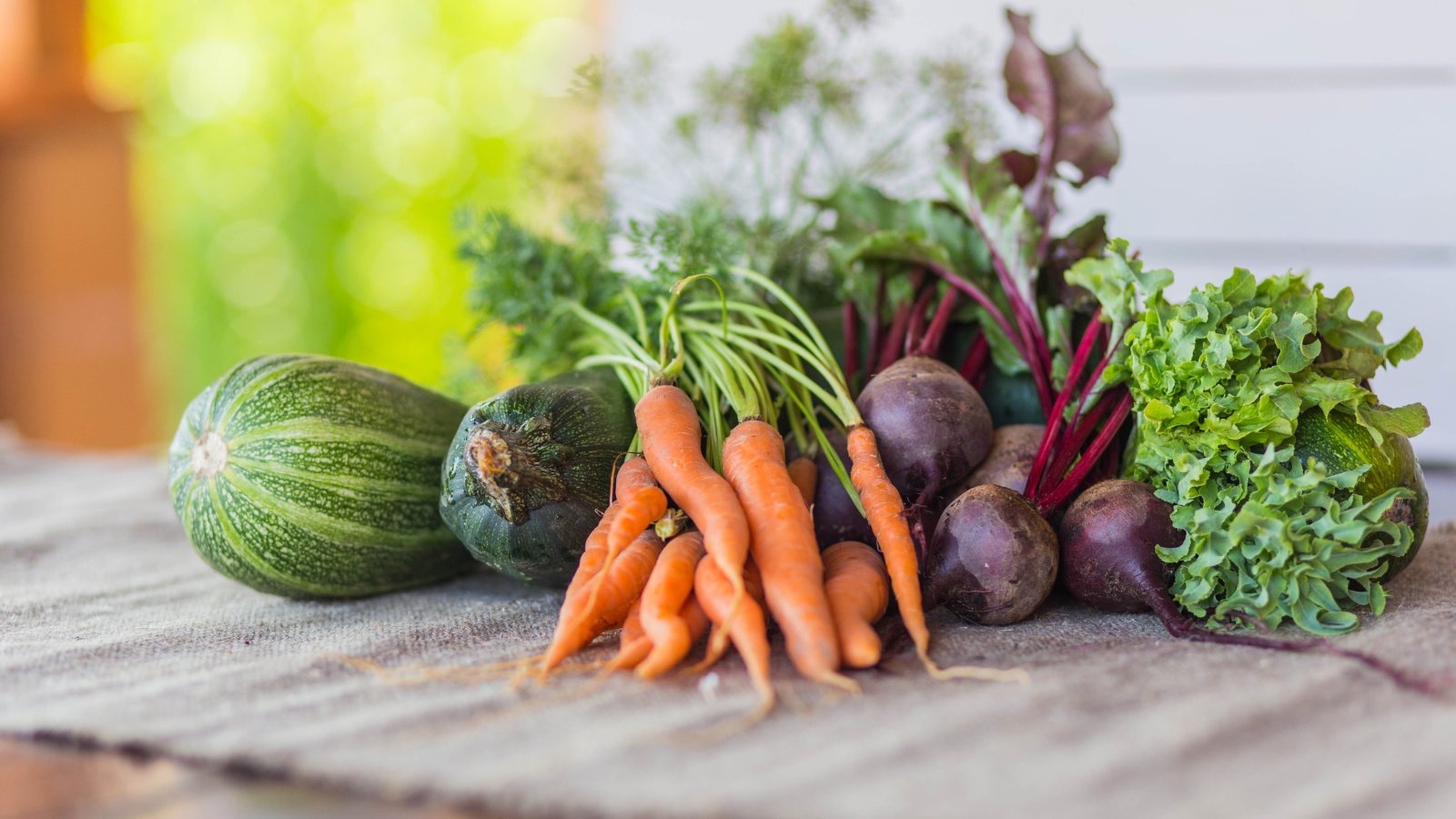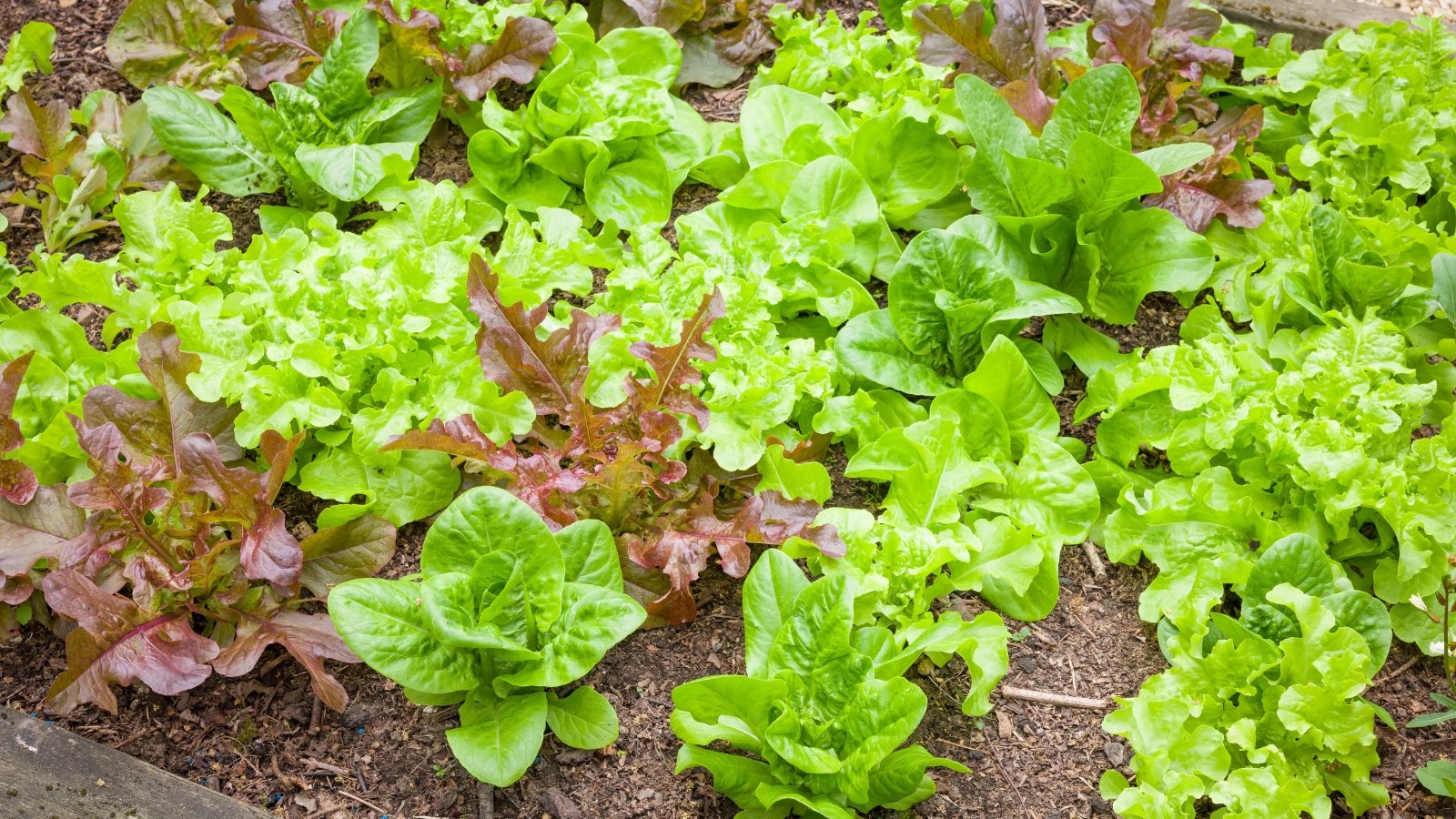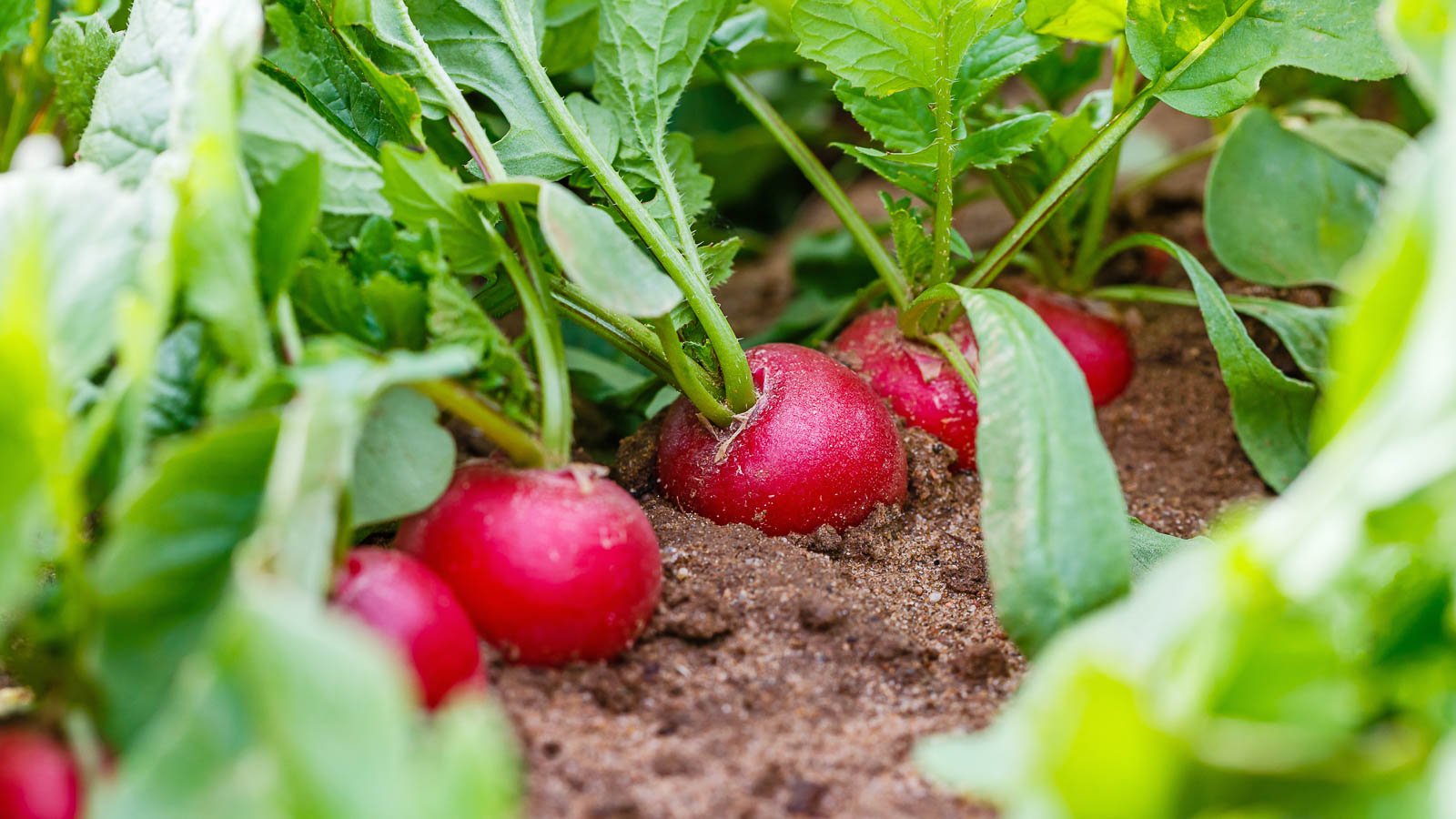Best Beginner Vegetables: 11 Easy Crops to Grow from Seed
If you’re used to buying seedlings from a nursery, sowing vegetables from seed can be intimidating! However, watching veggies transform from tiny seeds to harvestable crops is rewarding. Join vegetable farmer Briana Yablonski to learn easy crops perfect for beginners.

Contents
With the spring gardening season just around the corner, it’s time to think about what you want to grow! Bright red tomatoes? Tender heads of lettuce? Crunchy carrots?
If you’re a beginner gardener, knowing which vegetables to start with can be difficult. Starting with easy crops will give you confidence and allow you to enjoy the satisfaction that comes with growing your own food. Plus, watching a plant go from a seed to your plant is an inspiring process!
The following vegetables are all beginner-friendly and easy to grow from seed. You can sow all of them directly in your garden, so you don’t have to worry about having access to the materials and space required for starting seeds indoors.
Arugula

Arugula is one of my top vegetable cops for beginners. The tiny seeds are easy to sow directly in the garden, and the slightly spicy baby greens are ready to harvest about a month after planting. A single planting can provide multiple harvests if you leave the smaller leaves on the plant.
This green is also forgiving in terms of harvest. You can use baby greens in salads and on top of pizza, but larger leaves create a unique pesto and add a spicy kick to pasta. I recommend spacing the seeds about half an inch apart for baby greens, but other spacings also work well.
Although you can directly sow arugula in your garden year-round, be aware that the tender greens sometimes go to flower in warm weather. This process, known as bolting, leads to bitter leaves. Choosing varieties like ‘Slow Bolt’ arugula can help you grow healthy arugula throughout the summer.
Beets

You can think of beets like ‘Early Wonder’ as two-for-one veggie. The bright red roots taste great when roasted or boiled, and the nutritious leaves can be used instead of Swiss chard.
Since beets prefer cooler weather, early spring and late summer sowings are ideal. Plant a single seed every three to four inches a few weeks before your last spring frost and two months before your first fall frost. Soaking the seeds in warm water for 12-24 hours before planting helps improve germination rates.
Beet seeds actually contain multiple seeds, so don’t be surprised if you see multiple plants emerge from a single seed. ‘Early Wonder’ plants remain healthy and round when they’re a bit crowded, but you can always thin seedlings if they’re too close together. Allowing two to three inches between each plant allows the plants to grow into sizable roots.
Bush Beans

Whether you like slender green beans like ‘Jade’ or shelling beans that require a bit more work, you can find a bush bean you like. These low-growing plants don’t require trellising, so they’re easier to manage than pole beans. Not only do they provide you with delicious beans, but the plants also team up with beneficial bacteria to add valuable nitrogen to your soil.
Since beans are warm-weather crops, wait until the danger of frost has passed to sow the seeds in your garden. Plant a seed every two inches, and space rows of plants 12-24 inches apart. Sowing a new round of seeds every one to two weeks will provide you with a continuous supply of beans throughout the summer.
Most bush beans start producing beans about 50 days after sowing. When you see flowers, know that beans aren’t far behind. Once the plants begin producing, plan to harvest two to three times a week to avoid overgrown beans.
Carrots

Is there anything more rewarding than pulling a carrot straight from the ground? Although carrots sometimes get a reputation for being a difficult vegetable for beginners, knowing a few tricks can help you enjoy a successful harvest.
Start by loosening your soil so the roots can easily penetrate the ground. Insert a digging fork all the way into the ground, pull the handle back until the top of the soil cracks, lift the tines out of the soil, and repeat the process every foot. Avoid applying too much nitrogen to your soil since this leads to large greens but small roots.
Once the soil is ready, sow a trusted variety like ‘Mokum’ in your garden a few weeks before your average last frost date. Space the seeds half an inch to an inch apart, and keep the soil moist until you see the seedlings emerge. You can then thin them so they’re one to two inches apart.
Cucumbers

Both slicing varieties like ‘Tasty Green’ and smaller pickling types like ‘Hokus Gherkin’ are warm weather vegetable crops that are great for beginners. So, whether you’re planting the seeds directly in your garden or transplanting seedlings, avoid placing the seeds and plants outside until a few weeks after the last spring frost.
Since cucumber plants regularly produce water-filled fruits, make sure to provide the plants with at least an inch of water per week. Apply the water near the base of the plant to keep the leaves dry and prevent diseases like powdery mildew. You should also keep an eye out for pesky cucumber beetles that love to munch on the plant’s leaves and fruits.
Depending on which variety you plant, you can expect to begin harvesting mature cucumbers about 50-60 days after planting. Cucumbers grow quickly during warm summer days, so check your plants for fruits every one to two days.
Kale

Kale is a hardy, cool-weather green that you can harvest for months. Just plant it once, pick the large outer leaves, and give the smaller leaves time to mature. You can also sow the seeds of varieties like ‘Red Russian’ an inch apart and harvest small greens as tender baby kale.
Since kale prefers cool weather, it grows best in the spring and fall. Start by sowing seeds indoors four to six weeks before your last spring frost and planting the seedlings outdoors around the time of your last frost. You can also directly sow seeds outdoors a few weeks before the last frost.
Although kale is easy to grow, it is susceptible to numerous pests. Watch for caterpillars like cabbage worms and armyworms, tiny pests like aphids, and colorful harlequin bugs. You can pick these pests off by hand or use organic treatments like neem oil and Bt spray.
Lettuce

If you’re tired of buying wilted or flavorless lettuce, try growing your own! Whether you enjoy crisp romaine, tender bibb, or a blend like ‘Heirloom Gardens Mix,’ you can find lettuce that brightens your garden and your plate.
This beginner-friendly vegetable prefers cool weather, so plant it in the spring and fall. Start sowing the seeds outdoors a few weeks before your last spring frost and continue planting every three weeks to enjoy a continuous harvest. Space the seeds one inch apart for baby greens or eight to twelve inches apart for mature heads.
While you can try growing lettuce throughout the summer, I recommend taking a break in the summer and resuming in the early fall. Hot temperatures often cause lettuce to bolt and become bitter.
Peas

If there’s one vegetable that signals spring, it’s peas! Snow peas like ‘Oregon Giant’ and snap peas like ‘Patio Pride’ both thrive in the cooler days of spring and don’t mind below-freezing temperatures. Sowing the seeds in your garden about a month before your last spring frost allows you to enjoy sweet peas when warmer weather arrives.
Peas are vining plants, so it’s a good idea to provide them with a trellis to climb on. A piece of lattice fencing, metal hog panel, or wooden stake will work well.
Since peas support bacteria that take nitrogen from the air and convert it into a plant-available form, you don’t need to add nitrogen fertilizer before planting these legumes. Instead, add a bit of finished compost to boost the amount of beneficial soil microbes.
Radish

If you’re an impatient beginner gardener, radishes are a great vegetable to grow. Although you can find many different varieties, radishes like ‘German Giant’ are ready to harvest about a month after you sow the seeds. Plus, kids and adults alike will delight in pulling the bright red roots from the ground.
Since radishes are root crops, you should plant the seeds directly in your garden starting as early as a few weeks before your last frost date. You can continue sowing a new round of seeds every two weeks for a continual harvest. However, stop sowing in the early summer and resume in the early fall.
Since radishes are brassicas, they’re susceptible to pests like flea beetles, cabbage worms, and harlequin bugs. You can cover the greens with a layer of row cover to exclude the pests, but a few holes in the leaves won’t harm the crunchy roots.
Spinach

Thanks to its impressive cold-hardiness, spinach is a great cool-weather crop. Since the seedlings don’t mind cold temperatures, it’s one of the first veggies many gardeners plant each spring. You can sow the seeds up to six weeks before your last spring frost.
Spinach varieties like ‘America’ provide multiple options for seeding and harvesting. You can space the seeds a couple of inches apart and harvest the leaves when they’re young. Or, you can space the plants six to eight inches apart and let the leaves mature.
Although some spinach plants can tolerate some heat, this green grows best in spring, fall, and winter. Therefore, I recommended seeding a round of fall spinach in September.
Zucchini

If you’ve heard stories of gardeners leaving bags of zucchini on their neighbors’ porches, you know how prolific these vegetables can be, and they don’t mind a beginner “green thumb.” Healthy plants like ‘Golden Zucchini’ and ‘Cocozelle’ can easily produce a zucchini every day in the summer! That means daily harvesting is key if you want to avoid large, watery fruits.
All types of summer squash and zucchini thrive in warm weather, so avoid planting them outdoors until a few weeks after your last spring frost. The plants grow quite big, so space them at least two feet apart.
Since the plants are susceptible to attack from squash bugs, consider covering your plants with row cover as they mature. Just remember to remove the covers once flowers appear to allow successful pollination.












